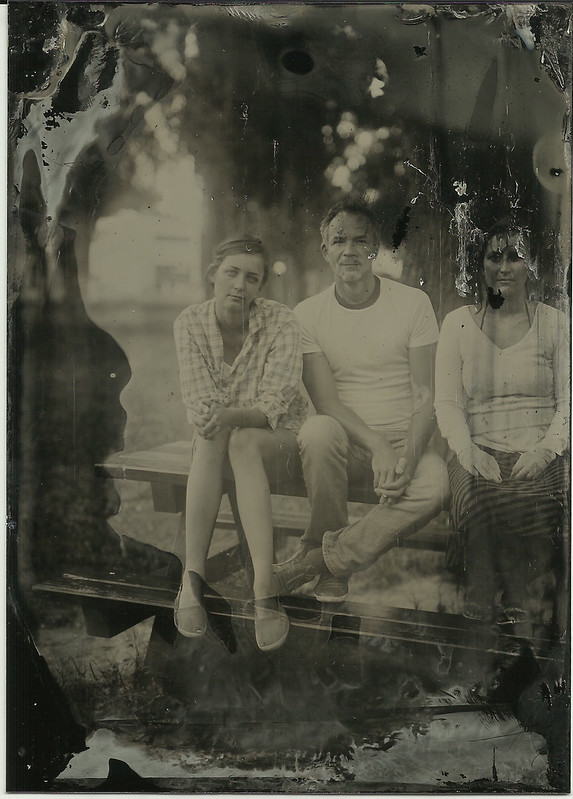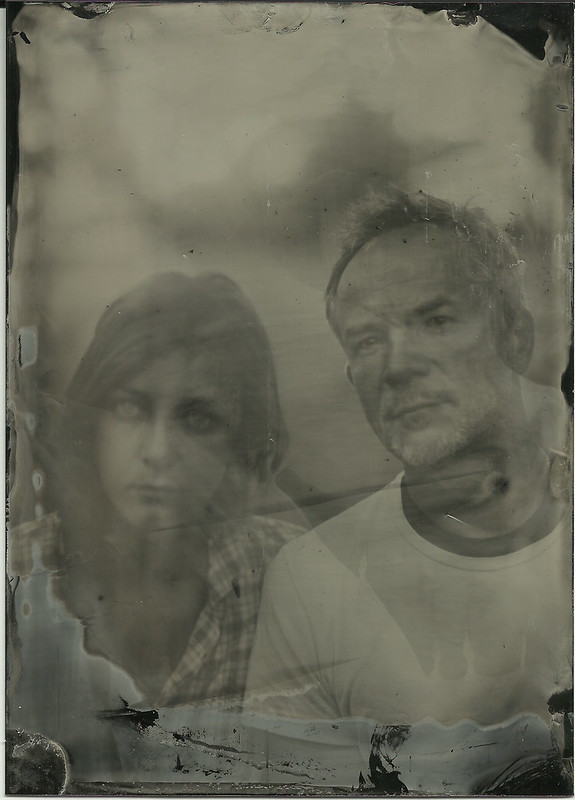As you know, I bought an old camera with which I hope one day to take wet plate collodion pictures. Before that, I need to do two other things: figure out if the plate holders that came with it are plate holders or film holders (I haven’t checked yet because it would be too depressing if they were film holders, although it probably wouldn’t be impossible to adapt them); and obtain a tripod suitable for the camera.
Oh, also organize a light-proof cloth, and darkroom equipment and supplies. So, five or so things.
But I have been concentrating on the tripod lately.
The problem is, the base of the camera has two screwholes, not just one. Meaning any normal tripod with a single screw is not going to support this camera stably (which might explain why the wood around each screwhole is cracked).
So no normal tripod would work, unless I interposed some sort of two-screwhole plate between the head of the tripod and the camera.
I browsed the Internet seeking a solution. Large-format tripods are expensive, even on ebay. I found a video on youtube showing a fellow apparently making a wooden tripod on the concrete floor of a garage somewhere in India, using only a hand saw. I found another site selling plans for wooden tripods for wet plate cameras.
He wanted eighteen dollars for the plans. The good thing about this tripod was that the top part was sort of a wooden plate, a little table top where the camera sat (instead of the usual modern tripod head), with three legs.
It would be easy to drill two holes in the appropriate place in that top and mount the camera. But I am too cheap to buy plans. Instead, I stared at the photo on the website for a long time and thought about what the design needed in order to be 1) stable and 2) adjustable. There is nothing that is more fun than figuring out something like that. This was a few weeks ago. I bought the wood I thought I’d need and started tinkering with it.
It’s mostly done. It needs to be sanded and painted, then assembled. I need to get different-sized screws for the legs (the first ones I got were too fat). Most of all, I needed the right screws to fix the camera to the top plate.
I looked at the hardware store first, but they didn’t have screws that fit. The thread was all wrong. Too coarse. Maybe not metric. The salesman recommended a professional screw store. I drove there but they weren’t open on the weekend, nor at any other time that worked for me. But I had an important piece of information: there is such a thing as professional screw stores.
So I found one in Vienna and went there today.
I called first to see if they were open at lunchtime, which was good, because a gravelly-voiced man told me No, they are not open at lunch. So I went there after lunch. I walked around looking at graffitti, and calling my wife, and texting my daughter until the shop opened up.
On the phone with my wife, I made screw jokes, then she made screw jokes, then explained to me that she had been making screw jokes because she thought I wasn’t getting her screw jokes and hadn’t noticed that I had made screw jokes too.
That’s how subtle I am.
Then I went in the screw shop which was awesome. It was a normal-sized shop, full of shelves. You walk in and there is the counter already and maybe room for two or three customers to stand and the rest is shelves of boxes of screws.
And a woman who looked to be about eighty. She ignored me when I came in the shop because she was doing something important behind the counter. I don’t know what, she got lower and lower and then was out of sight for a while. Finally she stood back up.
I need screws, I said.
The woman had a wart on her nose and a white hair was growing out of the wart.
I have an old camera. I need two screws to hold it to a piece of wood. This is the base of the camera, see the screwholes? I said.
She shook her head. Those don’t look metric, she said. (She also had a gravelly voice, but it was not the voice I had heard on the phone.) What did you say it was, a sewing machine?
She had some of her lunch around her mouth, caught in hairs, and was eating more of it, with a spoon, out of a small plastic container. It looked very much as if she had made it by gelatinizing small children with lye.
The piece of wood is 1.8 cm thick, I said.
Sewing machine, she said.
Camera, I said.
You could be in luck then, she said. Tripod screws are normed.
She went to a shelf and brought a box of screws that fit, on the first try. How long? She said.
Well, the board is 1.8 cm thick.
Here, measure them, she said. She handed me a folding yardstick thing. Sewing machines aren’t normed. They take all different screws. They could be any size, she said.
I told her I needed longer screws, she brought me some, I paid for them and here I am with two screws in my pocket.
Actually, they look like bolts, but screw is more fun to say.
Now all I need are bolts for the knees of the tripod legs, and I’m set. The world is my oyster.


